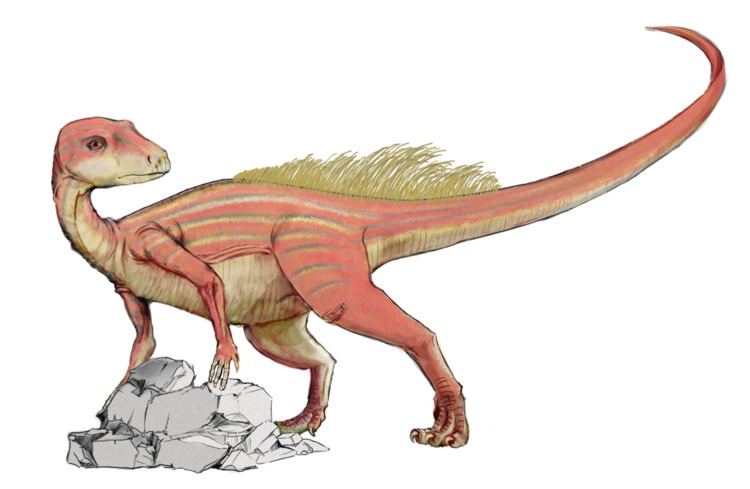 | ||
This is a list of dinosaurs whose remains have been recovered from Africa. Africa has a rich fossil record, but it is patchy and incomplete. It is rich in Triassic and Early Jurassic dinosaurs. African dinosaurs from these time periods include Syntarsus, Dracovenator, Melanorosaurus, Massospondylus, Euskelosaurus, Heterodontosaurus, Abrictosaurus, and Lesothosaurus. The Middle Jurassic is poorly represented in Africa. Only the sauropod Cetiosaurus has been discovered dating from this time period. The Late Jurassic, however, is well represented in Africa, mainly thanks to the spectacular Tendaguru Formation. Allosaurus, Ceratosaurus, Elaphrosaurus, Giraffatitan, Dicraeosaurus, Janenschia, Tornieria, Tendaguria, Kentrosaurus, and Dryosaurus are among the dinosaurs whose remains have been recovered from Tendaguru. This fauna seems to show strong similarities to that of the Morrison Formation in the United States and the Lourinha Formation in Portugal. For example, Allosaurus, Ceratosaurus, and Dryosaurus have been found in both the Tendaguru and the Morrison. This has important biogeographical implications.
Contents
The Early Cretaceous in Africa is known primarily from the northern part of the continent, particularly Niger. Suchomimus, Elrhazosaurus, Spinostropheus, Rebbachisaurus, Nigersaurus, Kryptops, Nqwebasaurus, and Paranthodon are some of the Early Cretaceous dinosaurs known from Africa. The Early Cretaceous was an important time for the dinosaurs of Africa because it was when Africa finally separated from South America, forming the South Atlantic Ocean. This was an important event because now the dinosaurs of Africa started developing endemism because of isolation. The Late Cretaceous of Africa is known mainly from North Africa. During the early part of the Late Cretaceous, North Africa was home to a rich dinosaur fauna. It includes Spinosaurus, Carcharodontosaurus, Rugops, Bahariasaurus, Deltadromeus, Paralititan, Aegyptosaurus, and Ouranosaurus.
Timeline
This is a timeline of selected dinosaurs from the list above. Time is measured in mya along the x-axis.
